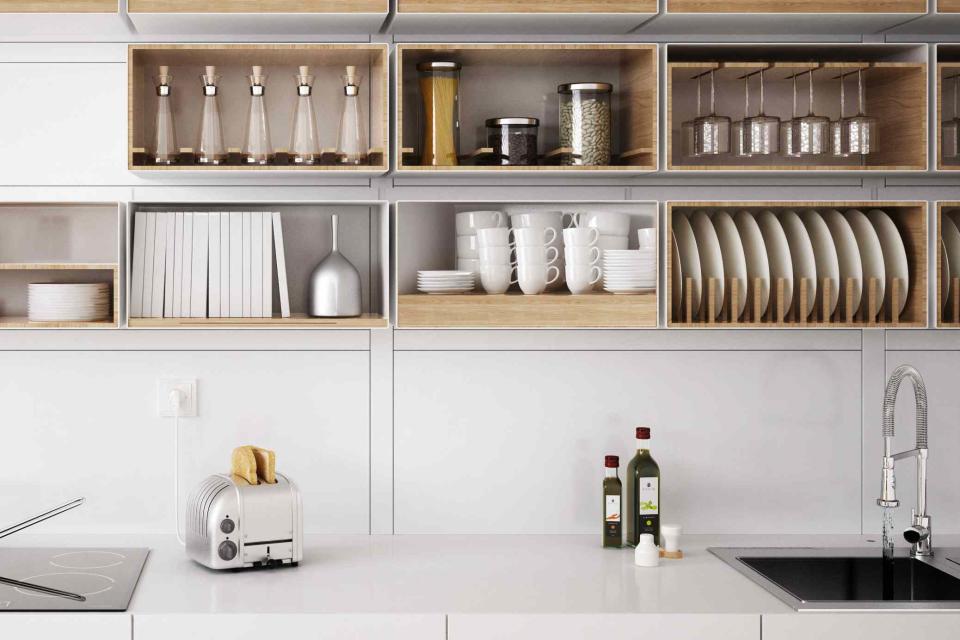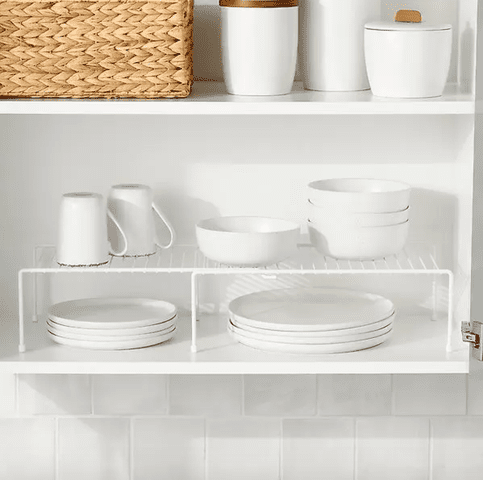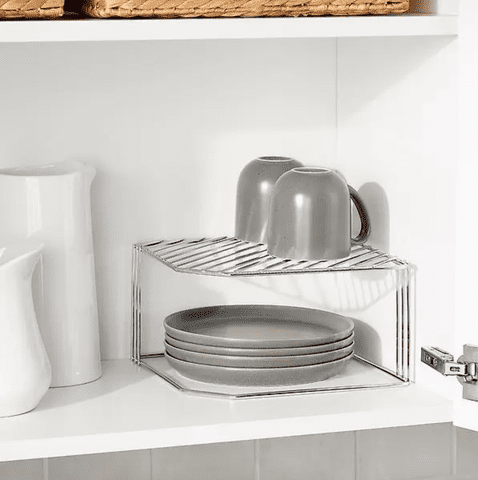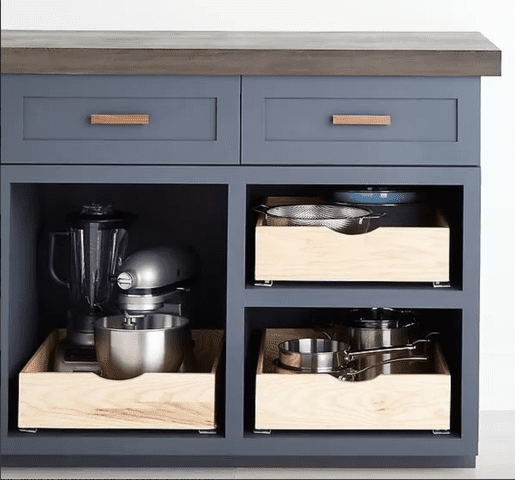10 Ideas for Organizing Your Dishes, According to Pros
Dotdash Meredith and Yahoo Inc. may earn commission or revenue on some items through the links below.
Keep everyday plates, cups, and utensils handy—but not out of hand—with these pro tips.

Eloisa Conti/Getty Images
At my house, breakfast and dinner are about the most hectic times of the day. Getting my kids to slow down long enough to eat something before they bike off to school or load into the car for soccer practice is never easy. The dishes left behind from these whirlwind meals only add more stress to our routines. But it's not just getting the dishes clean that can be a headache, it's getting them back where they came from—which is especially tricky if they came from jammed and disorganized kitchen cabinets.
Limited space, a few too many freebie items, and hard-to-access storage areas are all common problems that have turned my kitchen (and many others') into a frustration zone. So, we spoke with two organization experts, Tonia Tomlin of Sorted Out in Dallas and Kate Fisher of The Neatist in Durham, N.C., to get to the root of the problem—and offer tips to organize your dishware for good.
:10 Things All of the Most Organized Kitchens Have in Common
Pare Down What You Have
When it comes to everyday dishware, it’s easy to accumulate more than you need—but how many freebie cups or cutesy mugs does one person need? “Often, I have people whose stuff is just avalanching on top of them because they’re cramming things,” says Fisher. “If your cabinets don’t have any breathing room, you have too much stuff.”
To help clients declutter, she has them play a game called “Friends, Enemies, and Acquaintances." Here's how it goes: First, sort your items into things you love (the friends)—those can stay. Identify things you don’t use for whatever reason, like a chipped plate or too-small mug, (the enemies)—those can go. Then, take a look at the rest (the acquaintances), items that are in the rotation but not your favorites. Add back in only what you actually have space for. “You have to be thoughtful about only keeping what you truly use and need,” says Tomlin.
Find Your Most Accessible Zone
Store the items that you use every day, like plates, bowls, mugs, glasses, and silverware, within arm’s reach. For most people, that means the lowest shelves in upper cabinets and the highest drawers in base cabinets. “If you have to get on a stool or bend way over to get something, you’re working too hard,” says Fisher.
Adjust Your Shelves
“So often, my clients’ shelves aren’t adjusted properly,” says Fisher, who notes that in a typical upper cabinet, the shelves are spread too far apart and you end up with dead air above your dishes. She recommends measuring the tallest items you want to store on a shelf, then adjusting the shelf down to just an inch or two of clearance above those tall items. “Take everything down a notch so you can actually reach things and eliminate dead space,” she says.
If You Can’t Adjust, Add Shelf Risers
Shelf risers are a favorite of both Tomlin and Fisher, because they allow you to use the full height of a shelf. Fisher particularly likes expanding shelf risers, which open to utilize the full width of a cabinet: “These are my go-tos when I’m organizing a kitchen.”

containerstore.com
Get All the Way Into the Corners
For deep upper cabinets, a corner shelf can help make use of every inch. “They’re great for those hard-to-reach spots,” says Tomlin.

containerstore.com
Use Roll-Outs for Base Cabinets
Base cabinets have the opposite problem of uppers: They’re so deep that it’s hard to reach the things in the way back. As a solution, Tomlin and Fisher both recommend installing roll-out drawers to access the way back. “You may lose a half inch or an inch on either side, but it’s worth it so you don’t have to dig so deep,” says Tomlin.

containerstore.com
Keep Dishes Tidy with Pegs
For stacks of items that could shift inside a drawer, like bowls or a tall stack of plates, a peg board system can help to secure everything in a tidier fashion. “I always use pegs to keep things in place,” says Tomlin, who notes that using peg systems and pull-out drawers in base cabinets also makes it easy for kids to access the dishes—great for getting your ones involved in setting the table or emptying the dishwasher.

umbra.com
Use Drawer Dividers for Silverware
While forks, knives, and spoons may not technically be dishes, they’re certainly in the everyday rotation. Tomlin and Fisher both recommend drawer dividers to keep these tidy—just be sure to measure your drawer ahead of time to find ones that will fit exactly, without wasted space, or consider investing in a custom system.
Consider Displaying Your Dishes
For everyday pieces, open shelving can add storage—and keep items right where you use them. Consider installing a shallow shelf underneath your upper cabinets for smaller items like mugs or bowls that you use all the time.
Use Sticky Notes
If you’re ready for a cabinet overhaul, take the time to plan out where you’re going to put things before you get items back on the shelves. Fisher suggests using sticky notes to map it all out, and reminds us to always place like with like. “Open up all the cabinets and drawers, then write what you want to store. That lets you move things around and make adjustments without hauling around heavy dishes,” she says.
:7 Things You Can Purge From Your Kitchen Cabinets Without a Second Thought
For more Real Simple news, make sure to sign up for our newsletter!
Read the original article on Real Simple.

